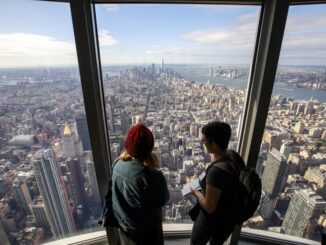
The Upper East Side, once known as the Silk Stocking District, has embraced cotton scrubs — but not everyone’s thrilled about it.
CBRE cited growing demand for healthcare services, especially for those over age 75, for the tony area becoming the “central node” in the Tristate region’s health sector, according to a new report by the company.
Five major new hospital and medical projects are rising amid the upper-crust neighborhood’s fancy homes and shops — and three more enormous, highly controversial ones are proposed.
New leases and expansions for health facilities in Manhattan totaled nearly 5.4 million square feet since 2018, much of it concentrated north of 59th Street on the East Side, according to the CBRE survey.
Each institution claims expansion is essential to providing state-of-the-art care, now and in the future.
But grass-roots campaigns would take a scalpel to three proposed projects now undergoing city review, while neighbors of the rising towers are already complaining about construction noise, dangerous conditions and quality-of-life nuisances.
The issues range from alleged long-term damage to the neighborhood’s economic and social fabric to temporary headaches in the relatively low-rise, residential neighborhood.
At the rising, 16-story Weill Cornell graduate student residence hall at 1393 York Ave. at East 74th Street, bright, uncovered construction lights have kept nearby apartment dwellers awake for months.
“It even comes through my shades,” a bleary-eyed neighbor of Realty Check complained.
The UES long had major medical facilities along York Avenue’s “hospital row” as well as Lenox Hill Hospital on Lexington Avenue. The institutions in recent years either bought or decided to develop parcels they owned along First, Second and Third avenues — to local surprise.
Three jumbos were first reported in The Post: the Hospital for Special Surgery’s 12-story, Anna-Maria and Stephen Kellen tower spanning the FDR Drive at East 70th Street; the 30-story, Extell-developed medical offices and treatments building leased to HSS at First Avenue and East 79th Street; and Iron Horse Labs on East 94th Street developed by Elevate Research Properties, a subsidiary of Taconic Partners.
In addition, the 15-story Northwell Health Victoria and Lloyd Goldman Health Care Pavilion for outpatient care recently broke ground at the corner of Third Avenue and East 77th Street, and the Weill Cornell graduate student residence hall is nearing completion.
Meanwhile, two proposals have drawn intense opposition that go beyond usual NIMBY complaints — Northwell Lenox Hill Hospital’s towering expansion on Lexington Avenue at East 76th Street; a new Memorial Sloan Kettering Cancer Pavilion at York Avenue and East 66th Street; and a New York Blood Center tower at 310 E. 67th St.
The $1.6 billion Lenox Hill project is opposed by The Committee to Protect Our Lenox Hill Neighborhood led by private equity investor Andrew Gaspar. His group, backed by State Sen. Liz Krueger, argues that the zoning variance sought by hospital parent Northwell to add a 26-story tower on top of its existing building would result in a “monstrosity” not just slightly larger, but two and a half times larger than current zoning.
“What kind of ‘variance’ is that?” the group has asked on social media.
Gaspar says he loves Lenox Hill — “My four kids were born there” — but the project, which the hospital said will take 11 years to complete, would “destroy” businesses the same way Second Avenue subway construction did and endanger everyone around it.
His group submitted a petition with 6,000 signatures to the city. The proposal is under review by the City Planning Department.
Also on the griddle is MSK’s proposal for enlarging an existing 31-story cancer pavilion to the equivalent of 62 stories in height. The project, which would require demolition of an existing MSK dormitory building, is opposed by at least three civic groups — Friends of the Upper East Side, CIVITAS and Carnegie Hill Neighbors.
The Friends organization termed the plan “out of scale,” “super-sized” and environmentally risky.
The proposal was conditionally approved by Community Board 8’s Land Use committee and will go to the Manhattan Borough President’s office once it’s finalized by CB8.
City Council member Julie Menin — who represents Manhattan District 5, which covers Third Avenue to York Avenue — said, “Each project has potential to bring major capital investment through job creation and investment. However, each one must be carefully scrutinized for community impact and to diminish disruption.
“There’s so much construction, there has to be some coordination. Each must be viewed on the merits. There’s no one size fits all,” she said.
Menin has yet to take a position on the MSK plan, which will likely reach the Council in the fall.
There’s plenty of support for the UES developments, too.
CBRE tristate CEO Mary Ann Tighe said, “It’s impossible to overstate the importance of clustering great medical institutions in one district. The interplay between clinicians who are serving patients daily and investigators who are in the lab inventing new treatments is the magic combination that creates cures.”
Tighe, who lives on the Upper East Side and is married to a surgeon, said, “Only proximity can make this dynamic possible.”
Real Estate – Latest NYC, US & Celebrity News



